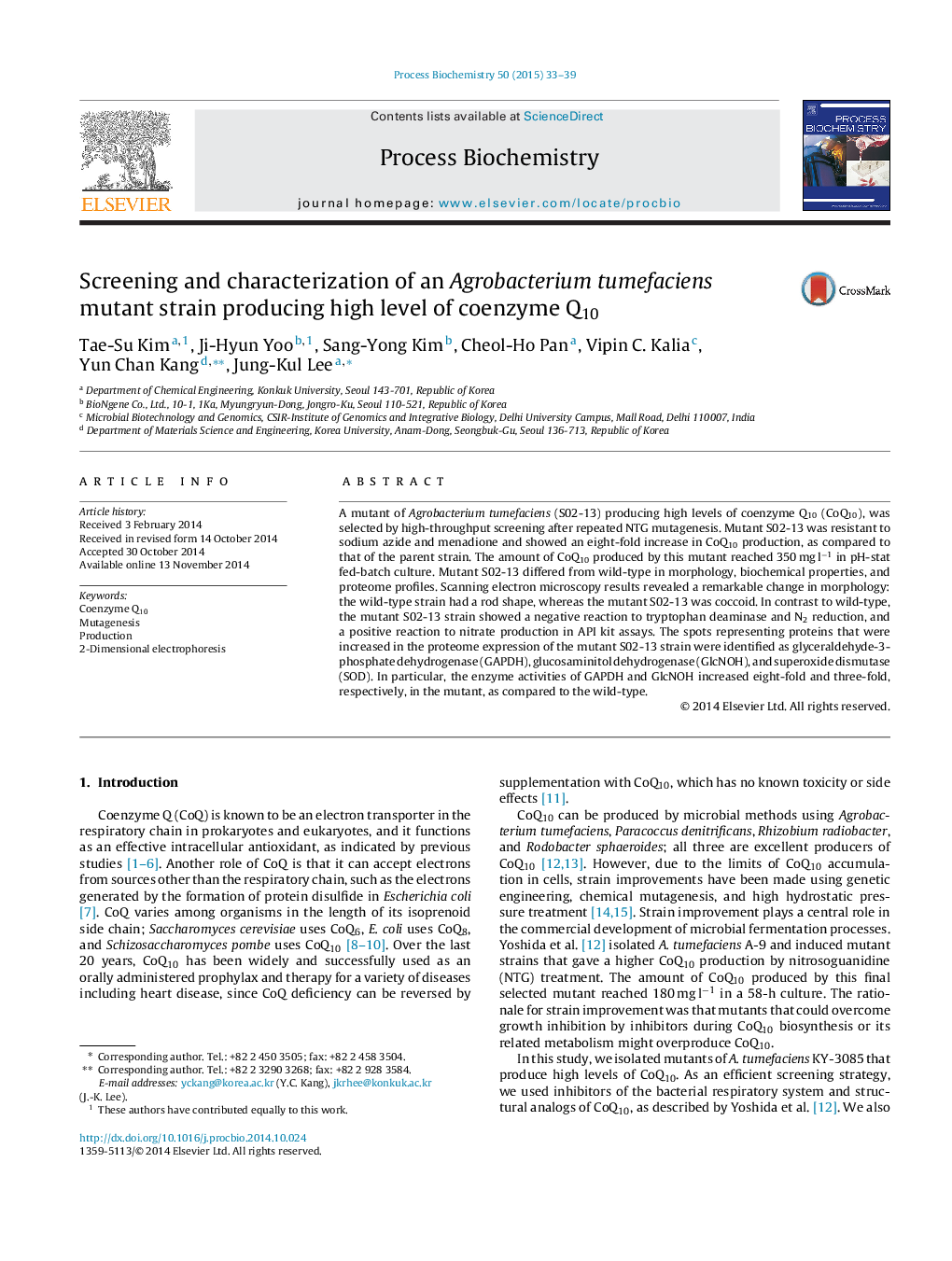| Article ID | Journal | Published Year | Pages | File Type |
|---|---|---|---|---|
| 34470 | Process Biochemistry | 2015 | 7 Pages |
•We select a mutant of Agrobacterium tumefaciens producing high levels of coenzyme Q10.•The mutant is resistant to sodium azide and menadione and shows an eight-fold increase in CoQ10 production.•The activities of GAPDH and glucosaminitol dehydrogenase increase eight-fold and three-fold, respectively, in the mutant.
A mutant of Agrobacterium tumefaciens (S02-13) producing high levels of coenzyme Q10 (CoQ10), was selected by high-throughput screening after repeated NTG mutagenesis. Mutant S02-13 was resistant to sodium azide and menadione and showed an eight-fold increase in CoQ10 production, as compared to that of the parent strain. The amount of CoQ10 produced by this mutant reached 350 mg l−1 in pH-stat fed-batch culture. Mutant S02-13 differed from wild-type in morphology, biochemical properties, and proteome profiles. Scanning electron microscopy results revealed a remarkable change in morphology: the wild-type strain had a rod shape, whereas the mutant S02-13 was coccoid. In contrast to wild-type, the mutant S02-13 strain showed a negative reaction to tryptophan deaminase and N2 reduction, and a positive reaction to nitrate production in API kit assays. The spots representing proteins that were increased in the proteome expression of the mutant S02-13 strain were identified as glyceraldehyde-3-phosphate dehydrogenase (GAPDH), glucosaminitol dehydrogenase (GlcNOH), and superoxide dismutase (SOD). In particular, the enzyme activities of GAPDH and GlcNOH increased eight-fold and three-fold, respectively, in the mutant, as compared to the wild-type.
